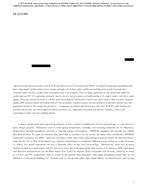The challenge of the Science House at the Science Museum of Minnesota was to create habitable, cold-climate architecture that would result in a net zero energy building and to get it built in a “low bid†environment. The design team used scientific evaluation to resolve design integration conflicts between functionality, aesthetics, and performance. The team significantly reduced annual energy consumption, beginning with expectations of use by the owner and architectural form and then by adding a renewable energy source. The defining question became, “How much building, with fixed program requirements, can we build and generate power for with the given budget?†The resulting building uses passive solar design, daylighting, ground-source heat pumps, and photovoltaic (PV) panels as the major design strategies.
This paper documents the predicted energy use and actual monitored performance, comparing to a calibrated DOE-2 model. It shows the extent of load reduction achieved with passive solar design. A challenge for getting to “real zero†is the difference between expected performance and actual building performance. This paper illustrates how measured data are used to trace the causes to unexpected equipment performance, heat pump behavior, and off-line PV panels. Assumptions regarding occupancy and building use during the design phase often differ from their actual use; this makes operating a building for zero energy an additional challenge beyond just designing one. Overall, the actual building is exceeding the design goals, using on average 22,385 Btu/ft2•yr (0.71 kWh/m2•yr) annually and generating 30,864 Btu/ft2•yr (0.97 kWh/m2•yr) to result in a building that generates more energy than it uses.
Units: Dual
Citation: ASHRAE Transactions, Vol. 113, pt 1, Dallas 2007
Product Details
- Published:
- 2007
- Number of Pages:
- 10
- File Size:
- 1 file , 1.1 MB
- Product Code(s):
- D-DA-07-004

